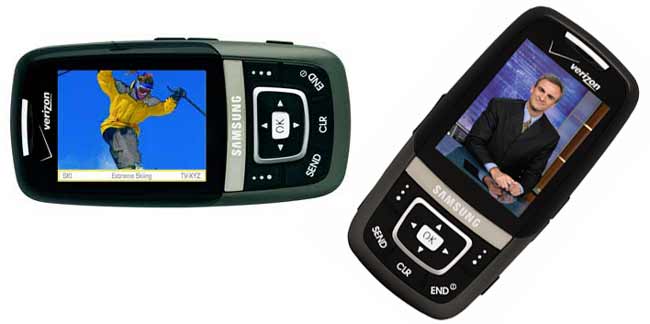TV Migrates to Cell Phones

Watching "Lost" episodes on your cell phone's tiny screen may or may not appeal to you, but various forces are tinkering with technologies that will let you do just that.
In fact, wireless carriers are already offering TV service in certain areas and on certain phones, and the TV industry is in the process of adopting a standard that will let TV stations broadcast to mobile devices, including cell phones with the proper tuners.
Mobile TV viewing could blossom in about a year — if people want it.
Can you see me now?
John Barrett, analyst at Parks Associates in Dallas, said pioneering efforts in Europe and Asia involving TV broadcasts to cell phone have produced mixed results.
"The model that seems to be dominating in Asia involves the consumers buying a cell phone and then watching the broadcasts for free, with the carrier hoping to generate revenue by selling ads—it's just TV on your cell phone, in other words," Barrett told LiveScience. "In Europe, the arrangement is more like pay TV.
"The Asian approach has proven more popular, and there are high levels of adoption, but it is doubtful that anyone has made any money from it," he said. "With the European approach, people may have made money, but it is unlikely that many people have adopted it."
Sign up for the Live Science daily newsletter now
Get the world’s most fascinating discoveries delivered straight to your inbox.
The chief example so far in the United States appears to be Verizon Wireless with its V CAST Mobile TV service, which costs an extra $15 per month for users who own either of four compatible phones. The user gets access to eight channels.
AT&T has acquired the same technology—MediaFLO from Qualcomm Inc.—for its wireless service but has not announced any availability or pricing.
Mobile TV
As for the TV broadcasters, the Advanced Television Systems Committee (ATSC), which oversees technical broadcasting standards in the United States, is working on an enhancement to the current digital over-air broadcasting standard. (American TV stations are supposed to finish converting to that standard in February 2009.)
"The current system is not designed for mobile devices — you need extra coding, error correction, and synchronization," said Mark Richer, ATSC president.
The ATSC is now evaluating three competing standards, which are required to be backward-compatible with the current standard, meaning that broadcasters can just add it to their signal. Richer hopes to have finalized a standard so that broadcasters can start offering mobile services in early 2009.
The one-year schedule represents a dizzying pace, since the current digital broadcasting standard took nine years to finalize, he said.
Road warriors
Barrett said his firm's surveys have identified two groups that might be interested in watching TV on mobile devices.
The first would be males ages 18-35 whom Barrett called "have-it-alls," who would actually watch entertainment programs. The second would be slightly older male "road warriors" interested in getting news and weather blurbs while waiting in airports or cafes.
But on the whole, "I see limited interest in it," said Bruce Leichtman, head of the Leichtman Research Group in Durham, NH.
"Not many people with the option of doing it on their cell phones are in fact doing it," Leichtman said. "Just because you have the screen doesn't mean that you bought the product in order to watch videos — in most cases it was just given to you."
- The Next Step: Wild New Technologies
- Video: The Digitization of Cinema
- 10 Technologies That Will Change Your Life









